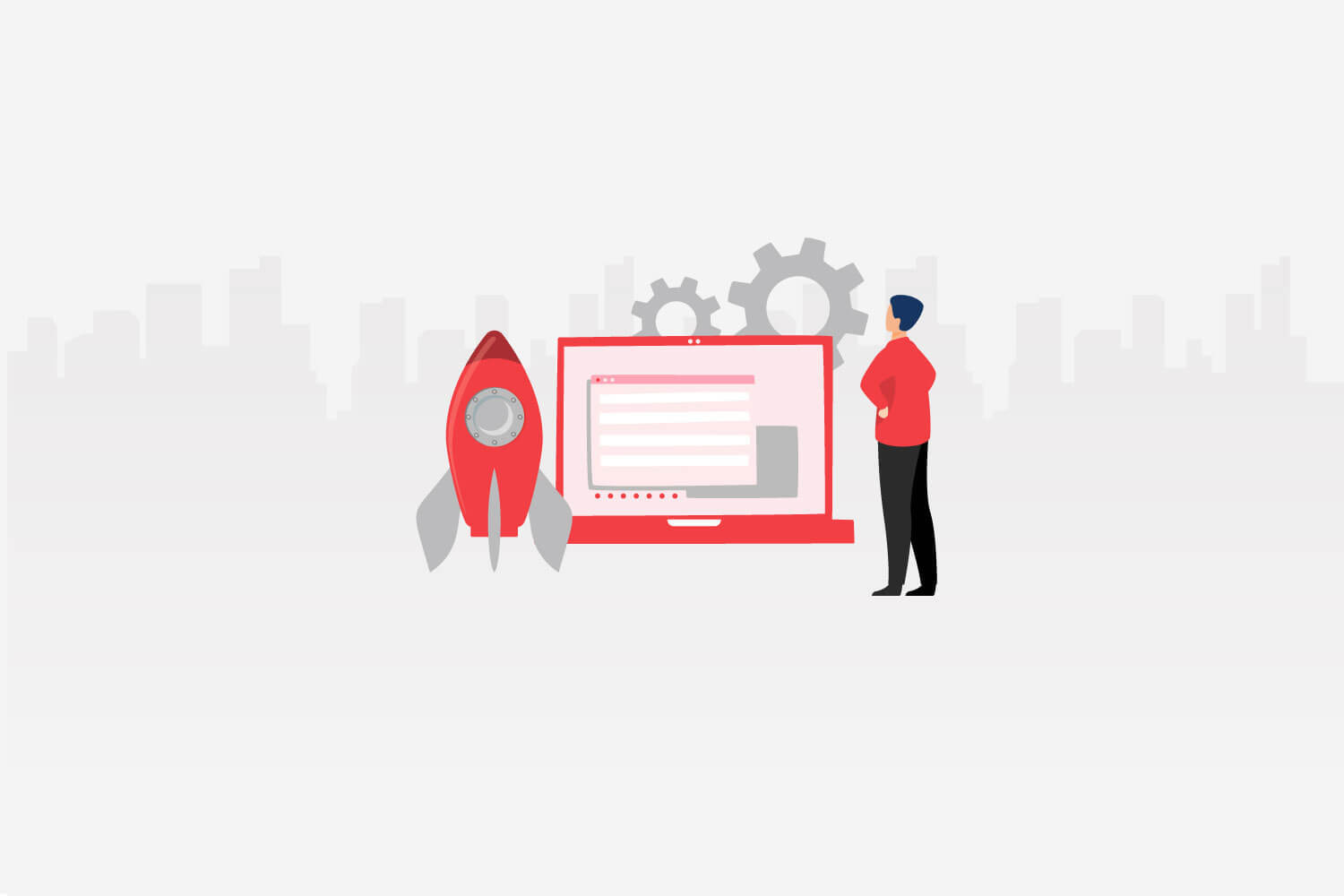In the fast-paced world of modern business, organizations are constantly seeking ways to enhance their productivity, cultivate employee growth, and drive success. A well-structured performance management system stands as a cornerstone of achieving these goals. The dynamic interplay between employees’ individual contributions and the collective strides of an organization requires careful orchestration, and this is where an efficient performance management system comes into play.
According to a survey by Deloitte, 58% of high-performing companies have a well-defined performance management system in place.
In this blog, we will explore the key steps to create a performance management system that not only maximizes employee potential but also aligns seamlessly with the organization’s strategic objectives.
Understanding the basics of a performance management system
A performance management system forms the backbone of modern HR practices, facilitating the alignment of employee efforts with organizational goals. It encompasses a comprehensive approach to evaluating, nurturing, and enhancing employee performance. Such systems have transcended the traditional annual review model, evolving into dynamic frameworks that foster continuous growth and development. The essence of a performance management system lies in its ability to provide a structured pathway for employees to understand expectations, receive feedback, and contribute to their own professional journey.
At its core, a performance management system involves processes and tools that assess individual contributions, skills, and achievements within an organization. This extends beyond mere evaluation and rating; it involves setting clear goals, establishing performance indicators, facilitating regular feedback, and creating opportunities for skill enhancement. The ultimate goal is to improve employee performance, boost engagement, and drive overall organizational success.
In the modern corporate landscape, characterized by rapid changes and technological advancements, the role of a performance management system becomes even more critical. Organizations seek to harness their human capital effectively, channeling individual talents toward shared objectives. As companies expand globally and remote work becomes commonplace, the challenges of managing and evaluating a diverse workforce necessitate an adaptable performance management system.
As we delve deeper into the intricacies of creating an effective performance management system, we’ll explore how organizations can define their unique objectives, design tailored evaluation criteria, implement appropriate appraisal methods, foster a culture of continuous feedback, leverage technology for streamlined management, address challenges, and ensure ongoing improvement. Through this journey, we will uncover the strategies that transform a conventional evaluation process into a dynamic engine for growth, both for individuals and the organization as a whole.
Defining your organization’s performance management objectives
To establish an effective performance management system, the foundational step is defining clear and strategic objectives. These objectives serve as guiding lights that align the system with the overarching goals of the organization. By adhering to the SMART criteria – Specific, Measurable, Achievable, Relevant, and Time-bound – organizations can ensure that their performance management objectives are well-structured and realistic.
Every organization’s objectives will vary based on its industry, size, culture, and long-term vision. These objectives might encompass enhancing employee productivity, improving customer satisfaction, fostering innovation, increasing revenue, or even promoting employee well-being. Defining these objectives requires collaboration between HR, management, and other relevant stakeholders to gain a holistic understanding of what the organization aims to achieve.
The significance of well-defined objectives extends beyond the initial setup phase. They serve as touchstones throughout the entire performance management cycle, guiding decisions related to setting performance expectations, choosing relevant performance metrics, and evaluating progress. Without clear objectives, the system could deviate from its intended purpose, leading to confusion, misaligned efforts, and missed opportunities for growth.
In crafting performance management objectives, it’s important to strike a balance between organizational aspirations and the reality of the workforce. Objectives that are overly ambitious can demotivate employees, while those that are too conservative might not drive the desired outcomes. Therefore, the art of formulating these objectives lies in understanding the capabilities of the workforce, identifying areas for improvement, and creating a roadmap for development.
As we delve into the nuances of defining performance management objectives, we’ll explore strategies to ensure these objectives are well-communicated, relevant, and adaptable to changing circumstances. By setting the right objectives, organizations can lay the groundwork for a performance management system that propels both individual employees and the entire organization toward success.
Designing key performance indicators (KPIs) for evaluation
Key Performance Indicators (KPIs) are the compass that guides the measurement of success within a performance management system. These carefully chosen metrics are the bridge between organizational objectives and individual performance. The process of designing KPIs involves a strategic approach to identify the most critical aspects that drive an organization’s progress.
Effective KPIs are those that are aligned with the organization’s goals, quantifiable, and relevant to specific roles and responsibilities. For instance, a sales team’s KPIs might revolve around revenue generation, while a customer service team’s KPIs could focus on customer satisfaction metrics. It’s important to tailor KPIs to the unique functions of each department or team, ensuring that they reflect the direct contributions employees make towards the organization’s success.
The selection of KPIs must strike a balance between quantitative and qualitative measures. While quantitative data provides clear numbers for assessment, qualitative indicators like teamwork, innovation, and problem-solving are equally important, often driving long-term success and growth. Therefore, an effective KPI framework includes a mix of metrics that capture both tangible outcomes and intangible qualities that contribute to a high-performing workforce.
KPIs also need to evolve with the changing dynamics of an organization. Regular review and adjustment of KPIs are essential to ensure they remain aligned with shifting business goals and industry trends. Moreover, this process should be collaborative, involving input from both employees and management to ensure fairness and comprehensiveness.
As we delve further into the realm of designing KPIs for evaluation, we will explore strategies to identify relevant metrics, set achievable targets, and create a balanced KPI framework that motivates employees, fosters growth, and accurately gauges the organization’s progress. Through this process, organizations can establish a performance measurement system that not only quantifies achievements but also inspires a culture of continuous improvement and excellence.
Selecting appropriate performance appraisal methods
Performance appraisal methods are the lenses through which an organization views and assesses its employees’ contributions and potential. Each method offers a unique perspective, and the selection process requires careful consideration of the organization’s culture, the nature of the roles, and the goals of the performance management system.
One commonly used method is the self-assessment, where employees reflect on their own performance, strengths, and areas for improvement. This promotes self-awareness and encourages employees to take ownership of their growth. Peer reviews, on the other hand, provide insights from colleagues who interact closely with the appraised individual, offering a well-rounded perspective.
360-degree feedback, a more comprehensive method, involves gathering feedback from supervisors, peers, subordinates, and even external stakeholders. This holistic approach can provide a comprehensive view of an employee’s performance but requires careful implementation to avoid biases and ensure anonymity.
Management by Objectives (MBO) is another widely used method where employees and managers collaboratively set performance goals that align with organizational objectives. This method promotes goal-oriented behavior and empowers employees to take an active role in their professional development.
Each appraisal method comes with its advantages and challenges. Therefore, a balanced approach often involves a mix of methods to provide a well-rounded view of employee performance. The chosen methods should be tailored to the organization’s needs, emphasizing transparency, fairness, and objectivity throughout the evaluation process.
In this section, we will explore the nuances of selecting appropriate performance appraisal methods, understanding when to use each method, and how to ensure a bias-free and constructive evaluation process. By choosing the right methods, organizations can gain a comprehensive understanding of employee performance and create a platform for growth, development, and collaboration.
Implementing ongoing feedback and coaching practices
Creating a culture of continuous improvement and employee development requires a proactive approach to feedback and coaching. Gone are the days of relying solely on annual performance reviews; today’s organizations thrive by fostering regular, meaningful conversations between managers and employees.
Ongoing feedback allows for real-time communication about goals, expectations, and performance. It provides opportunities for employees to receive praise for their accomplishments and constructive guidance for improvement. Regular check-ins enable managers to address any challenges promptly, preventing issues from escalating and ensuring that employees feel valued and supported.
Coaching is a crucial component of this process, as it involves guiding employees toward their best performance and growth. Effective coaching goes beyond simply pointing out shortcomings; it involves open conversations that explore an employee’s strengths, weaknesses, aspirations, and challenges. Through coaching, managers can help employees set personalized development plans, offer resources for skill enhancement, and provide encouragement as they work toward their goals.
In this section, we will delve into the art of implementing ongoing feedback and coaching practices. We’ll explore strategies to conduct effective feedback sessions, create a safe space for open conversations, and cultivate a coaching mindset among managers. By making feedback and coaching a consistent part of the performance management system, organizations can foster an environment where employees are engaged, motivated, and empowered to reach their full potential. This approach not only enhances individual performance but also contributes to the organization’s overall success.
Integrating technology for seamless management
In the digital age, the integration of technology has revolutionized how organizations manage their performance management systems. Human Resources (HR) departments are increasingly turning to software solutions that streamline processes, enhance data accuracy, and provide real-time insights into employee performance.
Performance management software allows organizations to centralize data related to goals, feedback, appraisals, and development plans. This centralized repository facilitates easy access for both managers and employees, promoting transparency and efficient communication. Moreover, these systems often come equipped with automated reminders, ensuring that important milestones and deadlines are not overlooked.
One of the key advantages of technology integration is data-driven decision-making. With the ability to gather and analyze vast amounts of performance-related data, organizations can identify trends, spot areas for improvement, and make informed decisions that drive employee growth and organizational success. Additionally, technology enables the customization of performance management processes to suit the unique needs of different teams and departments.
However, technology integration isn’t without its challenges. Organizations must ensure the security and confidentiality of the data they collect. This entails implementing robust cybersecurity measures to safeguard sensitive employee information from breaches or unauthorized access.
As we explore the integration of technology in performance management, we’ll delve into the benefits of performance management software, discuss the considerations when selecting the right technology solutions, and provide insights into overcoming potential challenges. By leveraging technology effectively, organizations can create a seamless and efficient performance management system that adapts to the ever-evolving demands of the modern workplace.
Addressing challenges and ensuring fairness
While a performance management system brings numerous benefits, it also poses challenges that organizations must address to ensure its effectiveness and fairness. One of the primary challenges is the potential for bias in evaluations. Unconscious biases can influence how managers perceive and rate employees, leading to unequal treatment. Addressing this challenge requires training managers to recognize and mitigate biases, implementing standardized evaluation criteria, and promoting a culture of diversity and inclusion.
Another challenge involves dealing with underperforming employees. A performance management system should have mechanisms to identify struggling employees, provide them with the necessary support, and offer opportunities for improvement. This could involve additional training, mentorship, or changes in job responsibilities. The goal is to help employees grow rather than simply penalize them for their shortcomings.
Additionally, striking a balance between accountability and employee well-being is crucial. Excessive pressure to meet targets can lead to burnout and decreased morale. Organizations must find ways to set challenging goals while also providing resources and support to help employees manage their workload effectively.
In this section, we will delve into the various challenges organizations might encounter in their performance management systems and provide strategies to address them. By recognizing and proactively tackling these challenges, organizations can create a fair, transparent, and supportive performance management environment that fosters employee growth and contributes to a positive workplace culture.
Continuous improvement of the performance management system
A successful performance management system is not static; it’s a dynamic framework that evolves with the organization and the changing landscape of work. Continuous improvement is at the heart of maintaining the system’s relevance, effectiveness, and impact. Organizations must proactively gather feedback, assess outcomes, and make necessary adjustments to ensure the system remains aligned with the company’s goals and the needs of its workforce.
Regular feedback loops are essential to understand how well the performance management system is functioning. This feedback can come from managers, employees, HR professionals, and even external stakeholders. Analyzing this feedback helps identify areas that need refinement or enhancement.
Data-driven insights play a significant role in continuous improvement. Organizations can analyze performance data to identify trends, patterns, and areas of concern. This information can guide decisions to modify KPIs, adjust appraisal methods, or enhance coaching practices.
Flexibility is key when it comes to making improvements. As the organization grows, changes its strategy, or faces external shifts, the performance management system should be adaptable. This might involve introducing new technologies, refining evaluation processes, or redefining objectives to stay relevant in a rapidly changing world.
In this final section, we’ll explore the strategies organizations can adopt to continuously improve their performance management system. By embracing a culture of constant evaluation, adaptation, and innovation, organizations can ensure that their performance management practices remain effective tools for nurturing employee growth, enhancing performance, and driving the organization forward.
Conclusion
In the realm of Human Resources (HR), fostering an environment of continuous improvement is paramount. The creation of a robust performance management system is a testament to an organization’s commitment to nurturing its most valuable asset – its people. By understanding the system’s fundamentals, defining clear objectives, selecting appropriate measurement metrics, fostering ongoing feedback, leveraging technology, and addressing challenges with fairness, an organization can build a foundation that cultivates employee growth and propels the company toward its vision.
In the ever-evolving landscape of business, the efficacy of a performance management system can be a defining factor in maintaining a competitive edge. By implementing the insights shared in this blog, organizations can not only enhance their performance management strategies but also create an environment where employees are empowered to excel, collaborate, and contribute to the collective success. Remember, a successful performance management system is not static; it’s a dynamic framework that evolves with the organization, ensuring a harmonious blend of individual aspirations and corporate objectives.
Testlify offers a range of assessments and challenges that allow you to gauge candidates’ knowledge, problem-solving skills, and creativity in real-world scenarios. With our extensive test library, you can objectively evaluate candidates’ abilities, ensuring you shortlist the most talented individuals efficiently. Ready to unlock the potential of your hiring process with our talent assessment tool? Book a free 30-minute live demo with Testlify. Our expert team will guide you through the platform, showcasing relevant skill tests tailored to your organization’s needs. With our support, you can streamline candidate selection, saving valuable time and resources.







